Temperatures and Boost Cycle
The card will boot if it is cool enough and the GPU load does not exceed 50% up to 2100 MHz. However, this is a kind of fair-weather boost, which in my very extremely demanding test game then increases as the temperature rises from 1870 MHz to about 1770 MHz collapses. With that it is only 60 MHz above what NVIDIA officially states for the boost. This leaves the question unanswered whether NVIDIA really preselected the press samples here or not. It is certainly not a Bin 2 chip, but at most Bin 1. This can be tested at a later time with selected boards, because I also have a “1 of 10” of a board partner in stock.
The memory can easily be overclocked to over 20 Gb/s, but it already loses a performance drop before reaching the stability limit, which is probably due to a thermal throttling. Micron has implemented such mechanisms from the outset. If you really want to go for it, you should stay just under the 20 Gb/s, because the GeForce RTX 3090 FE also stays within this range. Certainly not without reason. The power limit can, however, be fully utilized and set to a maximum value of 370 watts, which is a whopping 50 watts more.
But whether you want to do that, you should think twice with this cooler, because it may be quiet even in normal operation, with 50 watts more it already has real struggles for survival, which you can hear very clearly. My GPU tested here, which obviously does not belong to the lottery winners, could not even be overclocked more than 150 MHz stable, but after warming it up in about 75 to 105 MHz more clock. The dog-tail principle, because more waste heat causes the boost cycle to drop again. So it’s a bit senseless and the whole map is screaming for water cooling!
Let us now come to the recording with the high-resolution infrared camera. The PI640 from Optris has a true 640 x 480 pixel bolometer and records at up to 30 FPS. I use here the normal lens and calibrated foil with a known transmittance so that I can de facto look inside the closed housing. I leave the backplate on for now, because the backplate also cools the voltage converters.
If you now let the Witcher 3 run free and some air, everything heats up properly but still in a mannerly way. The delta of the heatpipes to the GPU diode is only 11 to 12 degrees at the outlet in front of the fans, which is a good value. The removal of the waste heat therefore works.
If you close the case, not much changes. The one to two degrees as a delta between the open and closed oven door is then hardly noticeable.
But now it’s getting tricky. I took off the backplate and screwed the cooler back on completely. What is missing, of course, is the cooling effect of the backplate, especially with the central VRM block of NVDD. It’s over 90°C on the back under the power stages, which also heats up a memory module to 84°C as a result. I then revived sensors and mounted the backplate again. At the same point in each case, the difference was 5 degrees less for the PLC and 3 degrees less for the memory. So this fits quite well.
- 1 - Introduction, Unboxing and Test System
- 2 - Teardown, PCB analysis and Cooler
- 3 - Gaming Performance: WQHD and Full-HD with RTX On
- 4 - Gaming Performance: Ultra-HD with and without DLSS
- 5 - FPS, Percentiles, Frame Time & Variances
- 6 - Frame Times vs. Power Comsumption
- 7 - Workstation: CAD
- 8 - Studio: Rendering
- 9 - Studio: Video & Picture Editing
- 10 - Power Consumption: GPU and CPU in all Games
- 11 - Power Consumption: Efficiency in Detail
- 12 - Power Consumption: Summary, Transient Analysis and PSU Recomendation
- 13 - Temperatures and Thermal Imaging
- 14 - Noise and Sound Analysis
- 15 - NVIDIA Broadcast - more than a Gimmick?
- 16 - Summary, Conlusion and Verdict















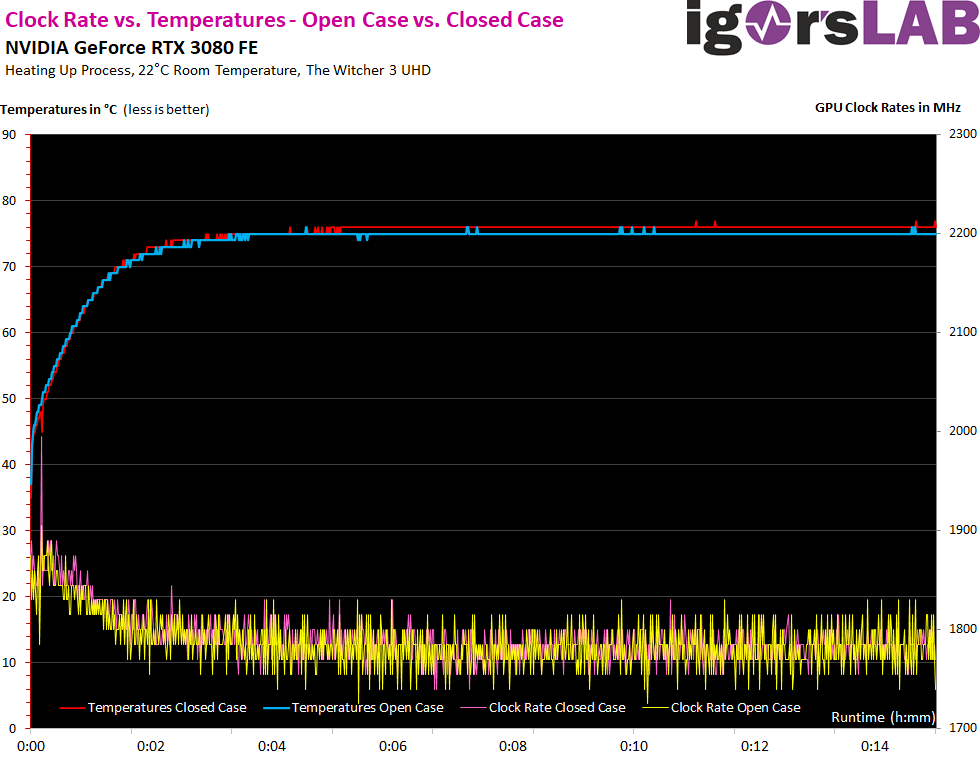
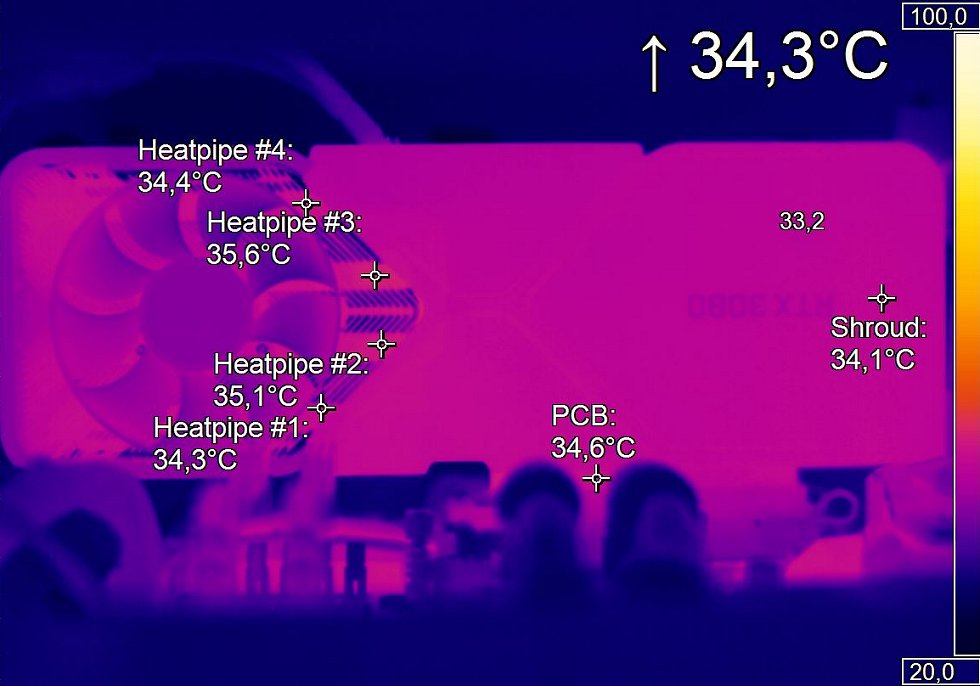
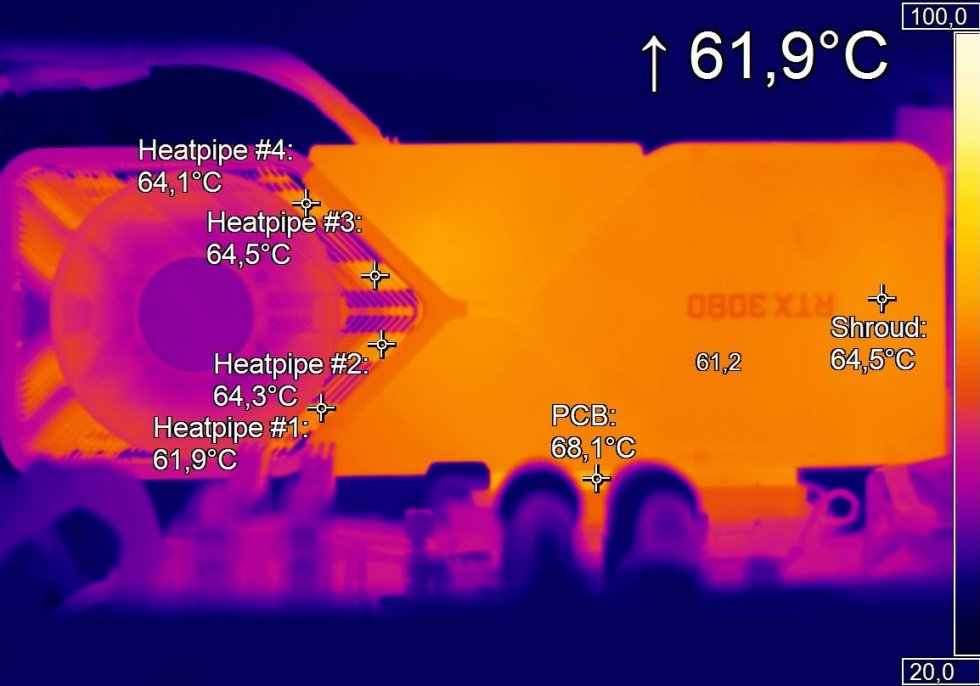
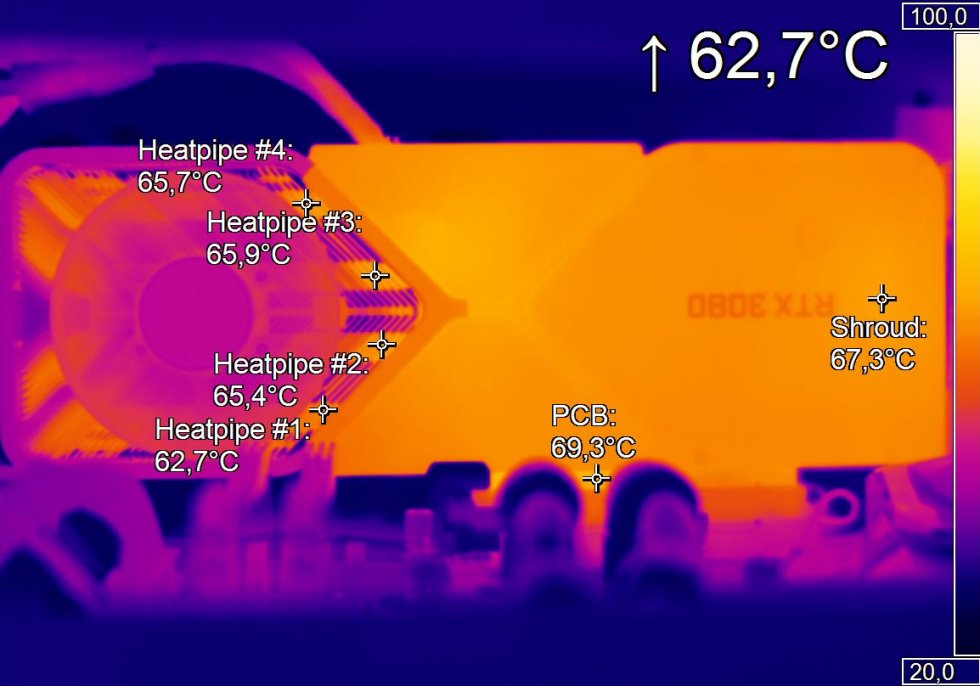
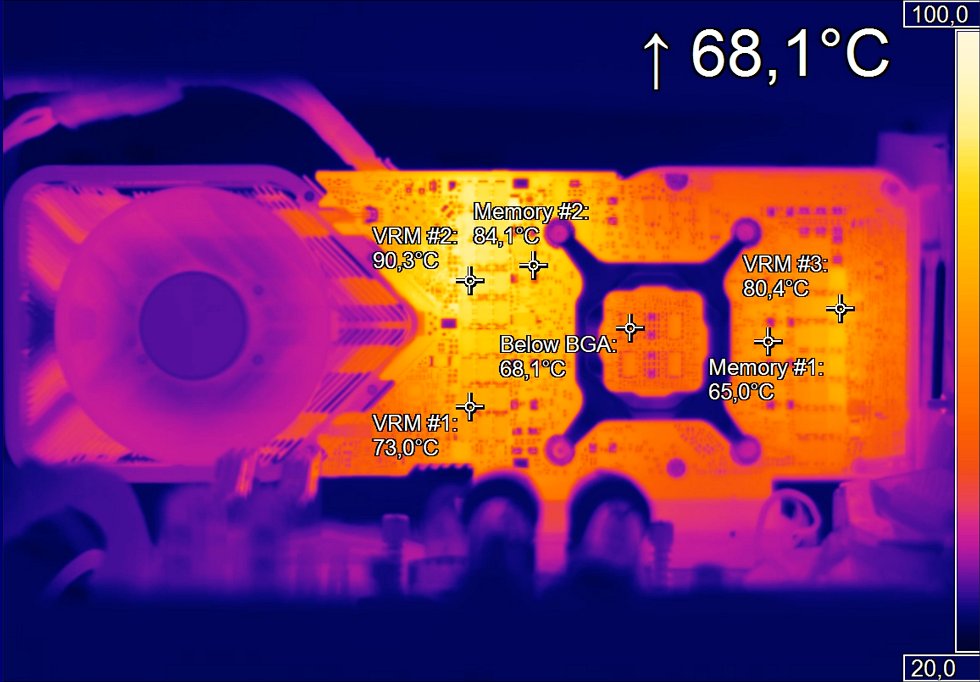

















Kommentieren